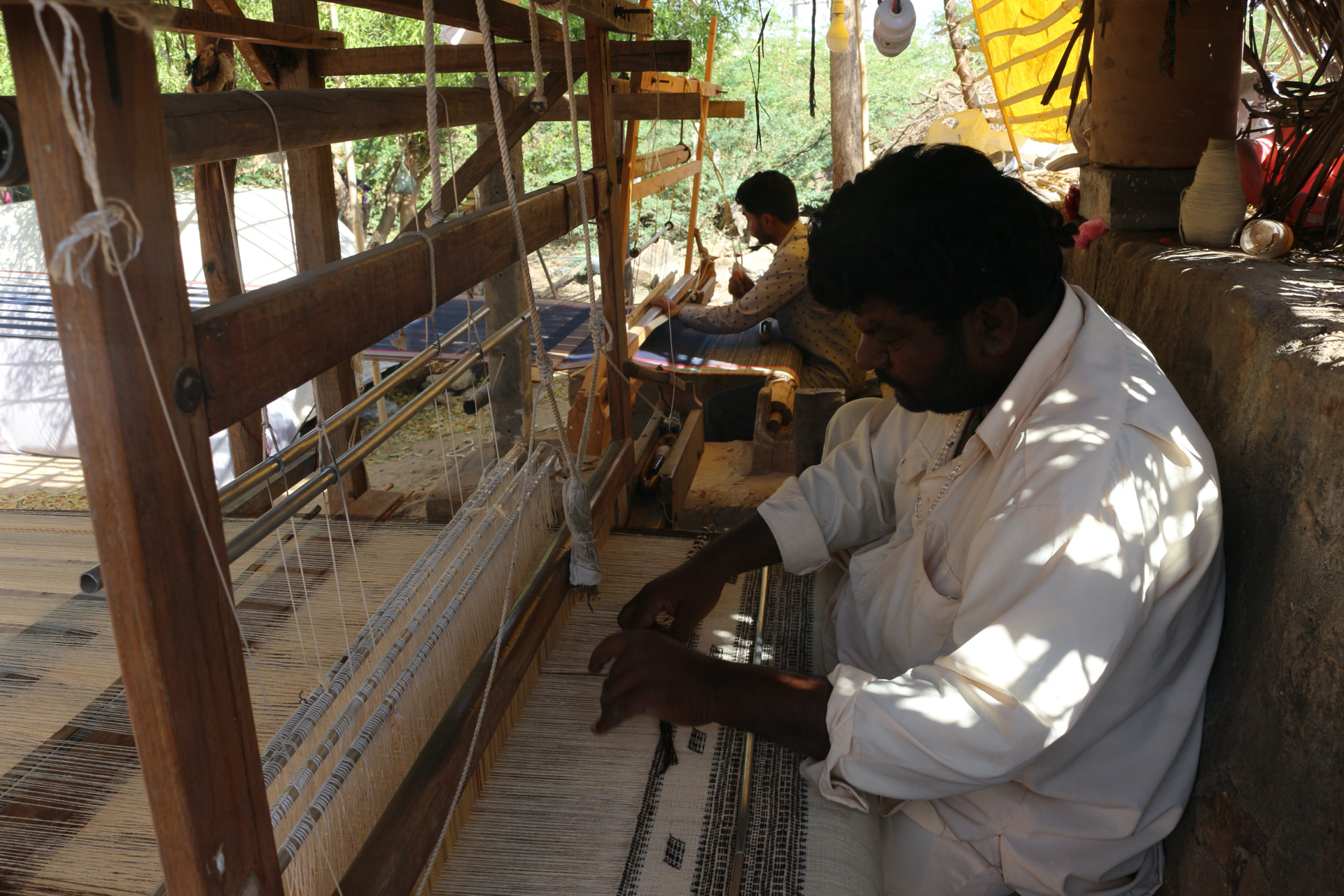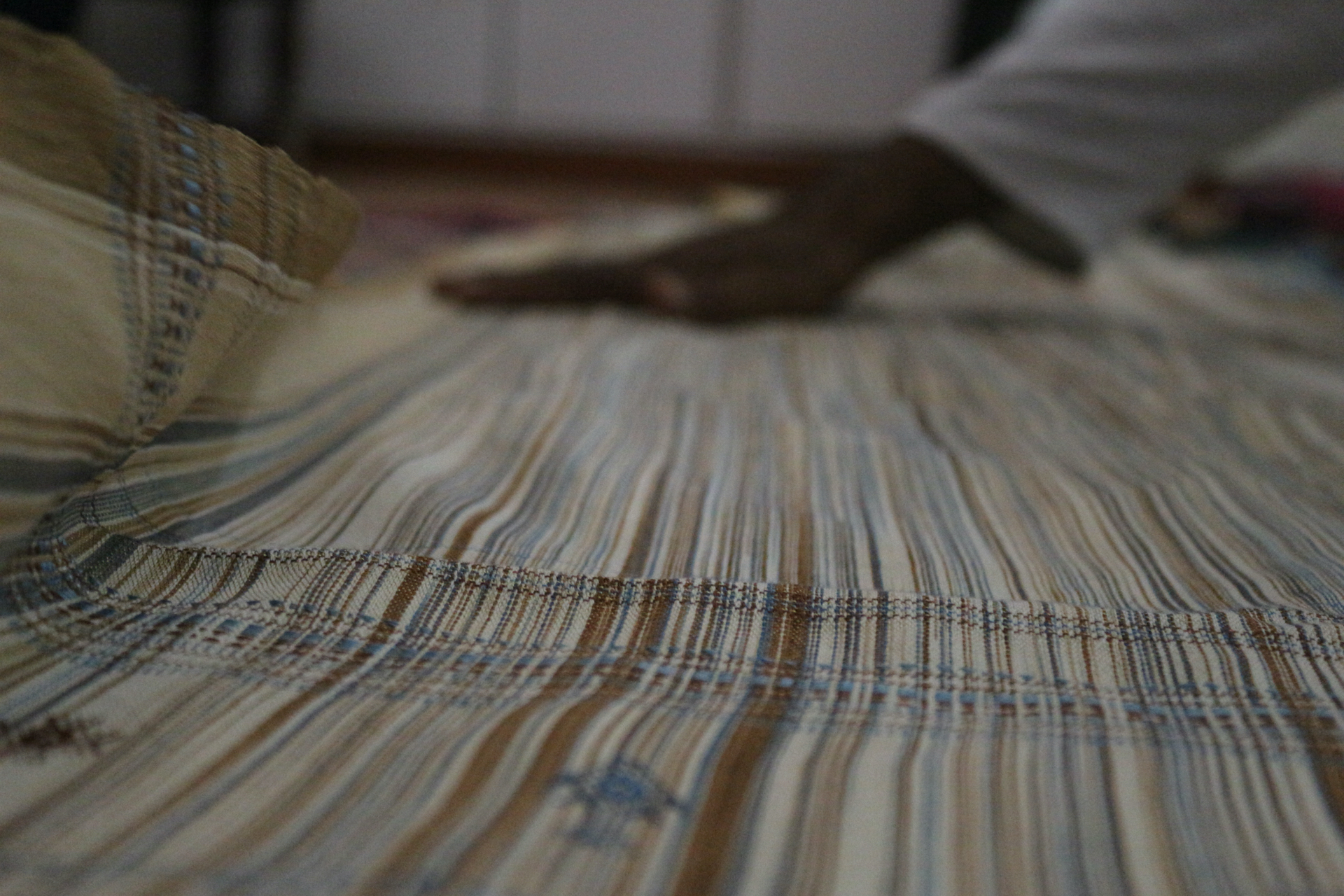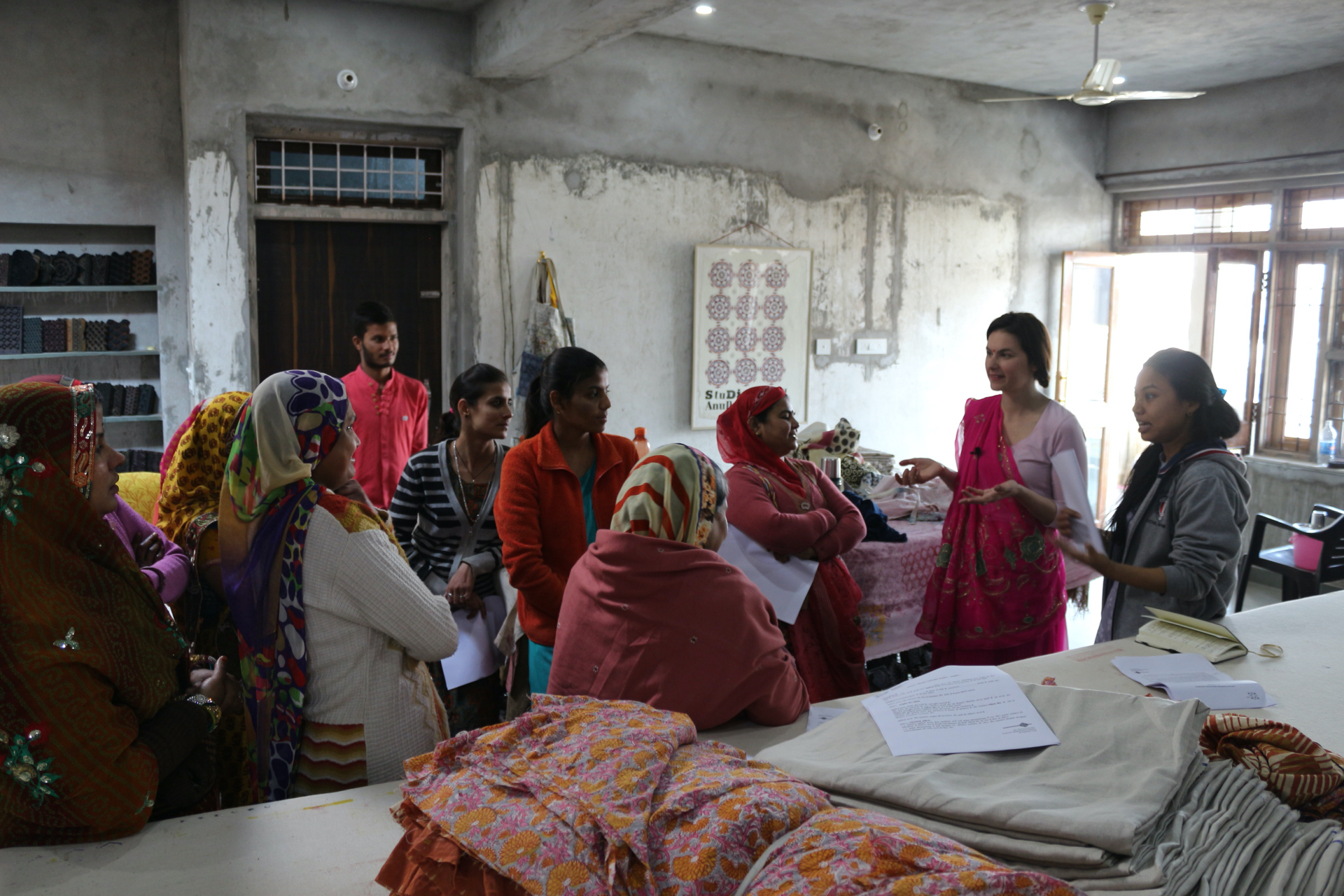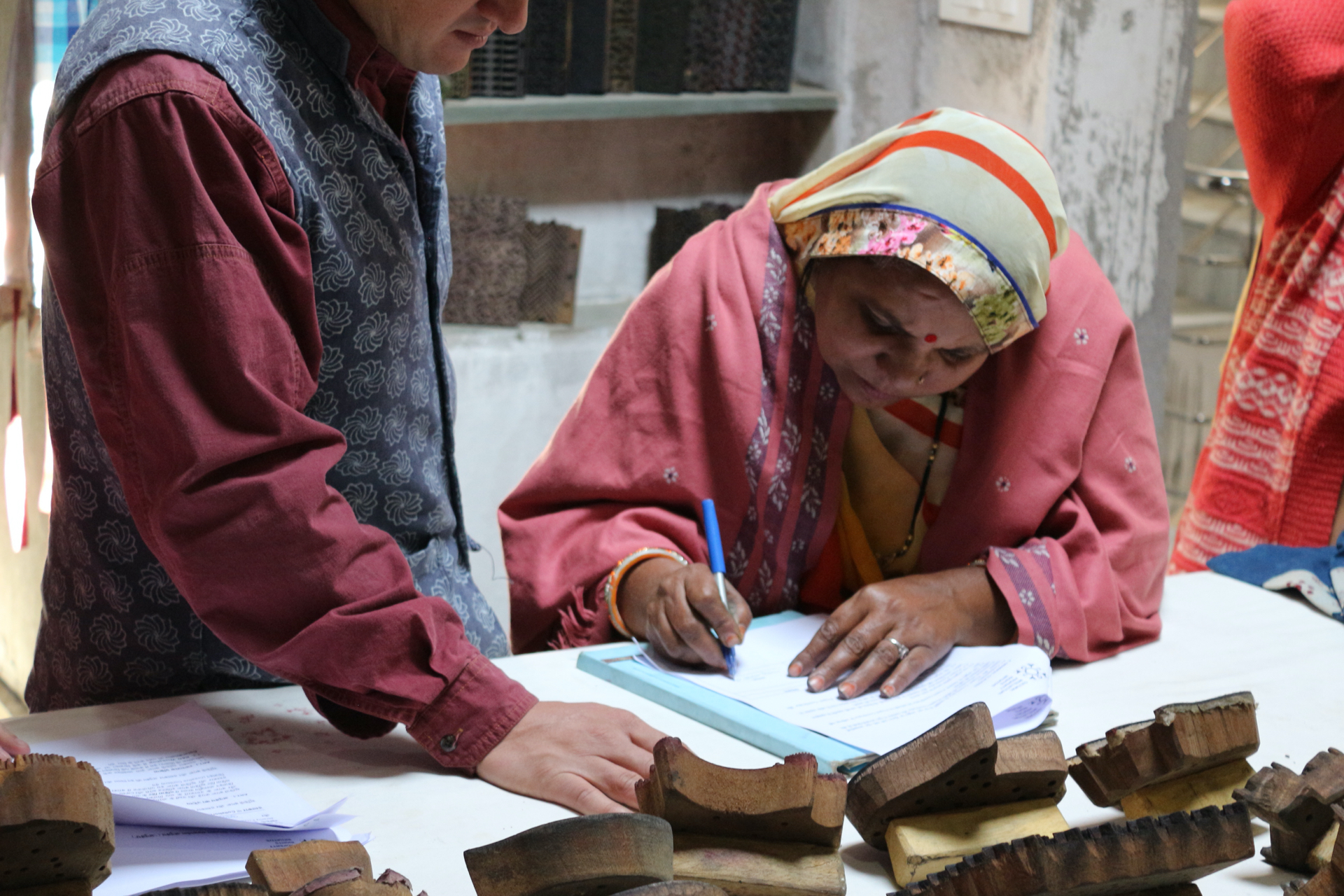Traditional textile craftsmanship can point the way towards designing a truly sustainable fashion system. By integrating traditional textile know-how into contemporary fashion supply chains and building partnerships with artisans and local communities, fashion can eliminate obsolescence, discrimination, misappropriation and unethical exploitation of people and natural resources.
The relationship between fashion and craft is complex, multifaceted and – many would say – toxic. It is also discriminatory to the degree that textile craftsmanship from France or Italy is currently valued differently from textile craftsmanship generated in India or South America.
Traditional textiles, or “traditional couture”, as it is often called, existed long before the establishment of the fashion system. But the fashion system chose to methodically nullify non-Western systems of dress and to associate traditional dress and folk costumes with something static, non-evolutive, non-fashionable.[1] In doing so, the fashion industry lost access to valuable traditional knowledge of sustainably producing and consuming textiles, and it became an industry built on obsolesce, consumerism and unethical exploitation of people and the environment. The result has been too many clothes, and not enough value.
Today the fashion industry is at last looking for ways to transform itself and become truly sustainable. To successfully reimagine fashion, we believe it is essential to look at the models of creating and consuming traditional couture and to form long-term partnerships with artisans – the living sources of knowledge.
In our 2021 study, “Rebranding ‘Made in India’ through cultural sustainability: Exploring and expanding Indian perspectives” (2021), we looked at the sustainability practices embedded in the Indian cultural context as valuable sources of knowledge for sustainable practices in the fashion and textile industry.
Looking at textile consumption in India, we observed that garments are not discarded easily. It is part of the Indian lifestyle to prolong the life of a garment through reuse and repair. What contemporary fashion refers to as upcycling, recycling and downcycling – supposedly new trends designed to stem the tide of textile overconsumption – has long been part of traditional practices in the Indian household.
Looking at traditional garment production at the level of design thinking, we noted that the Indian sartorial heritage is inherently sustainable. Traditional Indian garments such as the sari and the dhoti, for example, follow a zero-waste pattern making principle and are designed to last a lifetime, even multiple generations, by being draped on the body or sewn in such a way that allows for easy adjustment and good fit despite natural changes to the body. We call this Sustainability by Design. Furthermore, the relationship of most artisans with their craft (be it weaving, textile printing, textile dyeing or embroidery) goes far beyond the tangible product. Aarti Sandhu refers to this as a “model of design for well-being” embedded in many craft activities – a source of spiritual and emotional enlightenment.[2]
India’s cultural sustainability expertise, passed down over generations by its craftsmen and craftswomen, is thus essential for designing a sustainable fashion ecosystem that takes people, planet, profit and culture into equal consideration.
Bringing fairness and equity to the relationship between fashion and craftsmanship is an important part of this. International law refers to traditional textile manufacturing techniques (skills and know-how) and traditional patterns and designs as “Traditional Knowledge” and “Traditional Cultural Expressions”. Contrary to what one may think, traditional knowledge is not something old or antique. According to the World Intellectual Property Organization, it is a “living body of knowledge” that is transmitted from generation to generation, often being part of the cultural and spiritual identity of a community. When the fashion industry uses this knowledge and these expressions without the consent of the source communities, and without crediting or compensating them, traditional knowledge and traditional cultural expressions become subjects of cultural misappropriation and misuse.[3]

To truly create sustainable fashion today, this knowledge can be integrated into contemporary fashion and textile supply chains in a way that creates new opportunities for younger generations, promotes well-being for local communities and helps reduce the negative impacts of the way mainstream fashion is produced and consumed. This means enabling cultural sustainability in fashion through synergies between fashion and craft.
But how to create these synergies? To support the development of fair and equitable collaborations between fashion and craft and to guide best practices in the fashion industry, the Cultural Intellectual Property Rights Initiative® promotes the 3Cs Rule: Consent. Credit. Compensation©. The first of these Cs – Consent – is defined as “free, prior and informed consent of the craftsperson, Indigenous or local community”. The second – Credit – is defined as “acknowledgement of the source community and inspiration”. And the third – Compensation – means monetary or non-monetary remuneration.
Fostering collaborations between artisans and designers that are based on the 3Cs Rule will ensure that artisans are treated with respect and dignity and that fashion creates design for well-being and supports cultural continuity. If the fashion industry embraces the power and artistry of hands, fashion will become a force for empowerment.
We conclude with a call for action: It is time to make a pledge for cultural sustainability in fashion! If fashion designers and producers take inspiration, they must also secure consent, give credit and award compensation to the master craftspeople behind those ideas. Instead of cherry-picking traditional motifs and even borrowing entire aesthetic systems – an exploitative practice known as “extractivism” – the fashion industry should foster collaborations that span many years. Partnerships that focus on all the wisdom and knowledge related to traditional textile creation have much to offer, including zero waste pattern making, garments meant to last for generations, and protection of biodiversity.
It’s time to weave a non-toxic relationship between fashion and craft!
Monica Boța-Moisin, a lawyer and cultural sustainability consul tant, is founder of the Cultural Intellectual Property Rights Initiative and co-founder of WhyWeCraft.
Raphael Schreiber is a textile engineer, sustainability consultant and co-founder of WhyWeCraft.
[1]Angela Jansen, “Decolonising Fashion: Defying the ‘White Man’s Gaze’”, VESTOJ: The Platform for Criticial Thinking on Fashion, 2019, http://vestoj.com/decolonialising-fashion/
[2] Arti Sandhu, “Fashioning Wellbeing Through Craft: A Case Study of Aneeth Arora’s Strategies for Sustainable Fashion and Decolonizing Design”, Fashion Practice, vol. 12 (2020), pp. 172–92.
[3] Monica Boța-Moisin and Shravani Deshmukh, “How can the fashion industry treat Indigenous people and craft communities with fairness and equity?”, Cultural Intellectual Property Rights Initiative® (CIPRI), September 16, 2020, https://www.culturalintellectualproperty.com


